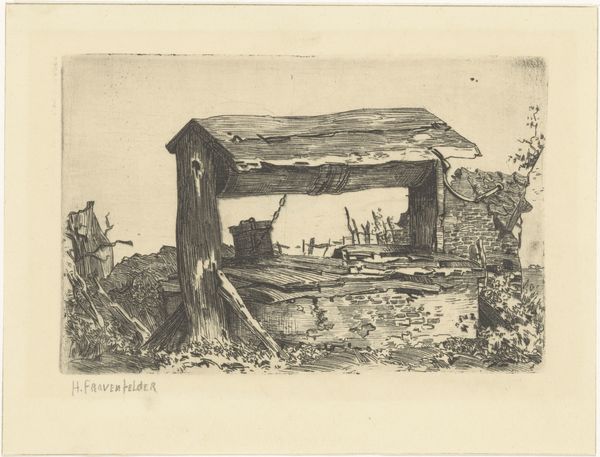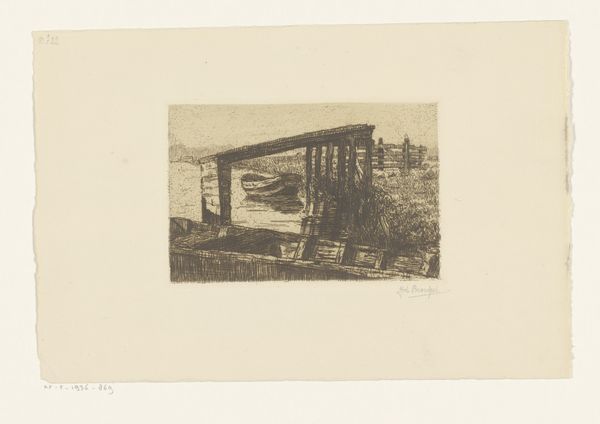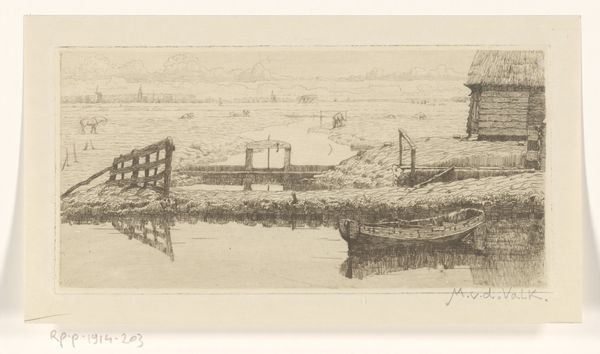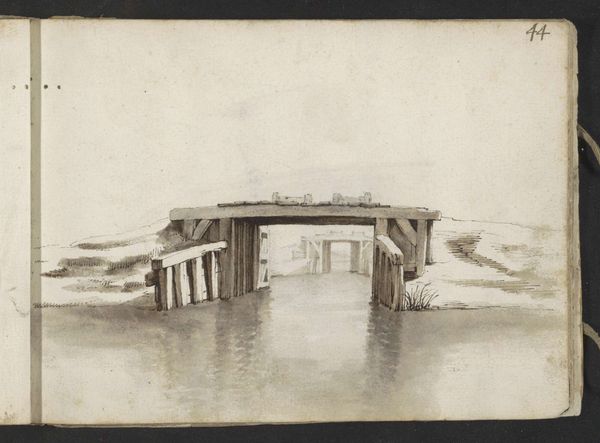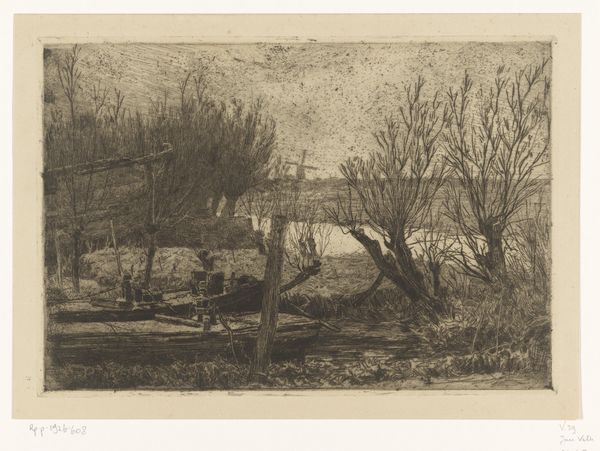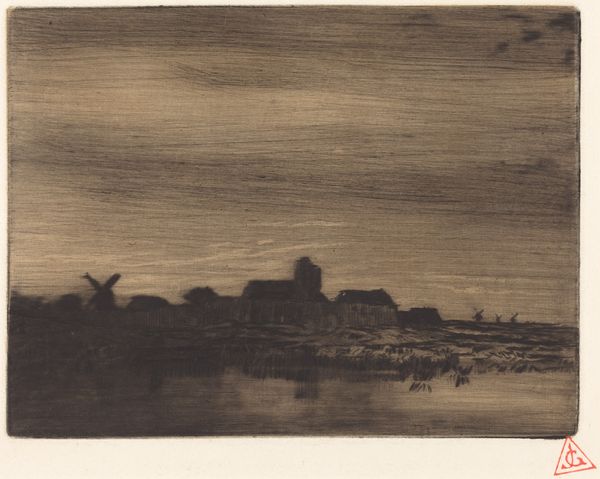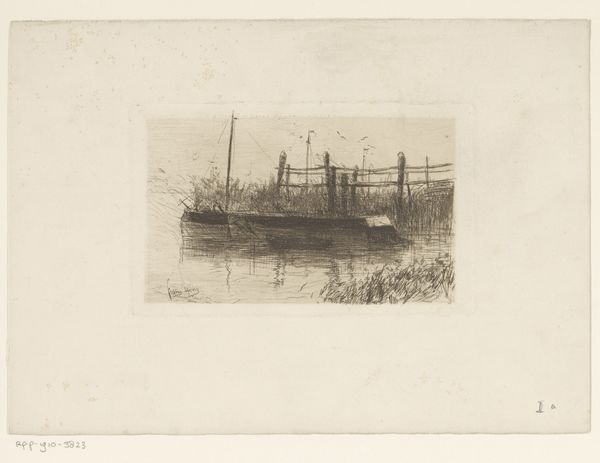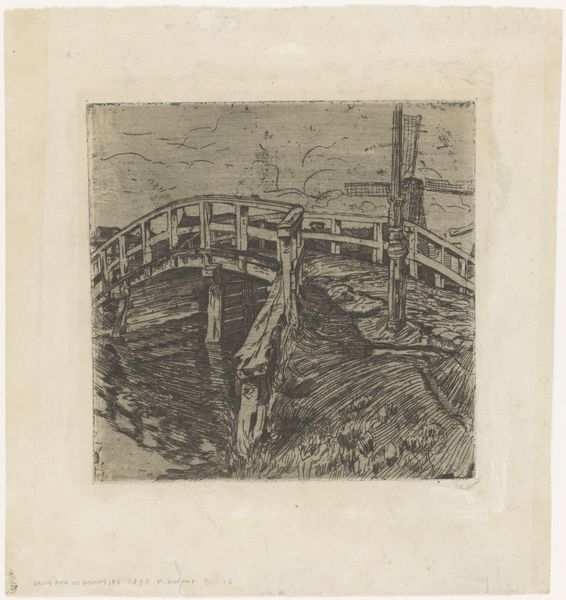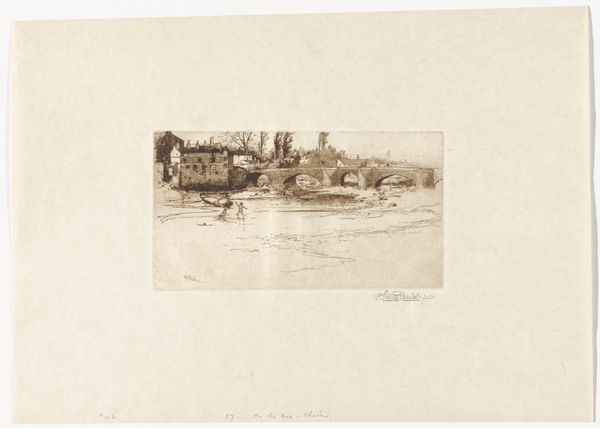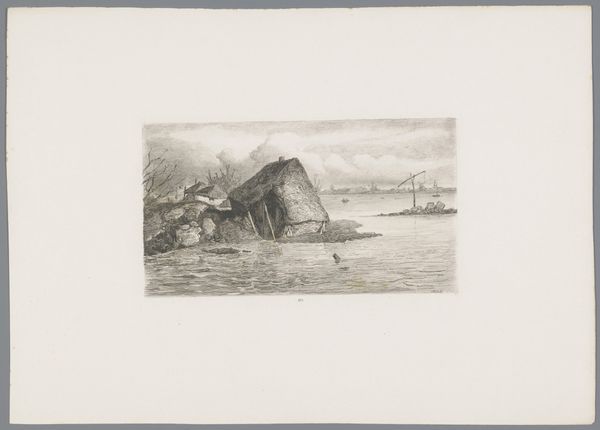
Dimensions: 7 7/16 x 11 5/8 in. (18.89 x 29.53 cm) (plate)11 x 15 9/16 in. (27.94 x 39.53 cm) (sheet)
Copyright: Public Domain
Curator: Frank Short's "A Span of Old Battersea Bridge," created in 1899, offers a glimpse into late 19th-century London. It’s rendered with both etching and aquatint techniques. Editor: My first impression is of stark contrast – a shadowy, almost cavernous structure framing a delicate, muted waterscape. There's a sense of looking both *through* and *into* the image. Curator: Indeed, the artist's deliberate composition constructs a narrative of old versus new, the natural world against industrial encroachment. The framing structure pulls your focus immediately, before revealing the wider context. The tonality alone does wonders. Editor: Considering its medium—etching and aquatint—I’m interested in the labor involved in its production. The careful biting of the metal plates, the layering of tones... It’s a surprisingly material-heavy process to achieve such a seemingly fleeting, impressionistic effect. And there's that beautiful degradation, a deliberate display of wear that mirrors the age of the bridge. Curator: The architectural elements almost create a proscenium. It gives that theatrical lens effect you mention. If you notice how the light hits specific elements, such as the water or those timbers in the foreground, it’s clear Short is deeply concerned with the picturesque potential of this area of London. Editor: And it raises questions, doesn't it, about accessibility and labor? The figures in that small boat suggest a working presence on the river, a reality for many Londoners at that time. We see industry looming in the background, hinting at the changing socio-economic tides and the daily existence of the community using that waterway. Curator: It does force a reconciliation, or at least a close proximity, between visual aesthetic appreciation and social reality. Even as we admire Short’s technical skill and careful staging of the composition, we have to confront what lies beyond the surface. Editor: Precisely, Short's work transcends mere landscape portrayal by imbuing the urban setting with a sense of working existence, of daily craft navigating monumental yet deteriorating structures. Curator: A fascinating blend of technical prowess, historical observation, and compositional design. Editor: Yes, it also highlights the human element inherently embedded in these structures. The decaying grandeur of industry echoes with the voices of past generations who shaped it, both literally and metaphorically.
Comments
minneapolisinstituteofart almost 2 years ago
⋮
Frank Short added sand to his aquatint ground to achieve a rougher, darker texture for the timbers of the Battersea railway bridge. The result is a grim depiction of urban decay as relevant today as it was to Londoners a century ago.
Join the conversation
Join millions of artists and users on Artera today and experience the ultimate creative platform.
